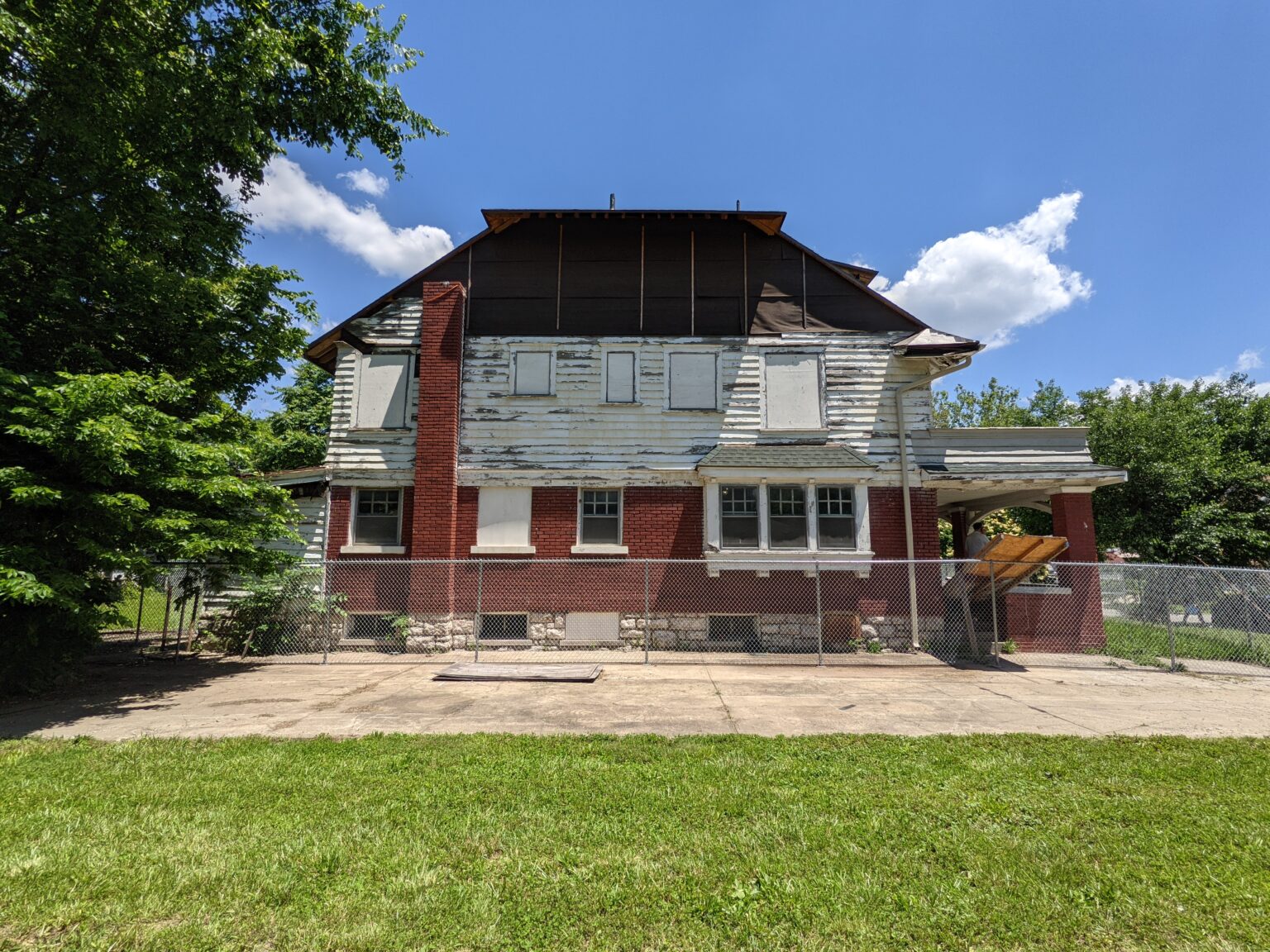Homicides have been increasing in Kansas City and across the country for the past decade, with a significant spike since 2020. Recently, Kansas City has approached and set record levels of crime, leading to expanded collaboration across the city to reduce violence. In 2022, KC 360 began convening antiviolence nonprofits, community leaders, elected officials and representatives from essential service providers in 2022.
KC 360 is made up of more than 60 community-based organizations and dozens of individual Kansas Citians. Everyone has a seat at the table in KC 360. In our meetings, community-based nonprofits, social service organizations, clergy, representatives from area school districts and library system, neighborhood, community members, community organizers, local government, and law enforcement work together to identify a path toward a safer Kansas City.
KC 360 soon launched its own Village Initiative, a strategy from the 360 model, in Kansas City, Missouri’s Santa Fe neighborhood. The village strategy focuses on a specific geography, expands comprehensive programs, and utilizes evidence-based practices.
Led by KC Common Good, the program is made up of and supported by local non-violence organizations, neighborhood and community organizers, clergy members, Kansas City government officials, the Kansas City Police Department, and everyday citizens looking for a path toward a safer Kansas City.
After a year of community outreach, data collection and research, and unprecedented collaboration, it’s time to look at why we chose Santa Fe, what has been done so far in the neighborhood, and what outcomes we have already seen.

Why Santa Fe?
Founded in 1827 on 520 acres of land southeast of downtown Kansas City, the Santa Fe neighborhood is one of our region’s oldest and most historic residential areas. After the owning family sold the land in the late 1800s, an exclusive residential neighborhood began to develop, quickly earning the reputation as the place where Kansas City’s rich and powerful lived.
However, white people refused to allow black people into the neighborhood. This was reiterated in a 1930s neighborhood covenant stating, “no real estate in Santa Fe Place could be sold, given, rented to or occupied by black people for a period of thirty years.” Despite this, Dr. D.M. Miller and his wife became the first black family to freely live in Santa Fe in 1948, the same year the United States Supreme Court ruled that the racially restrictive covenants were not enforceable by law. Following their lead, affluent black families began moving into the neighborhood in the early 1950s, creating a thriving, middle-class, black-owned community.
As white people left the black, urban neighborhood, they used their power alongside city leaders, financial institutions and the federal government, redirecting resources to the white suburbs. East Kansas City neighborhoods, including Santa Fe, were left behind. In 2020, Kansas City PBS told the story of the Santa Fe neighborhood in this short documentary, highlighting the historical significance, disinvestment that occurred due to redlining, and lasting influence of the neighborhood.

Today, located between 27th to the north, Linwood Blvd to the south, and Indiana to the east, Prospect to the west, the neighborhood is on the National Register of Historic Places and is well known for its walking tours, century-old bungalow-style homes and the former home of Satchel Paige. However, decades of disinvestment have left the neighborhood blighted and paved the way for a growth in crime.

From 2001 to 2021, just a 4.16-square mile area which includes Kansas City’s Santa Fe neighborhood accounted for 20.5% of homicides in the city. Because of this disproportionate rate of violent crime and it’s rich Kansas City history, the neighborhood was selected as the target focus area for KC 360’s Village Initiative.
How are we making a difference?
To focus on the long-term progress and sustainability of Santa Fe, KC 360 recognized that it is essential to work alongside the neighborhood, allowing those closest to the problem – the Santa Fe residents themselves — to lead and educate others.

Since its selection in June 2022, KC 360 and partnering organizations in the Joint Violence Reduction Initiative including the Office of the Mayor, the Kansas City Police Department, City Council members, Center for Conflict Resolution and the Santa Fe area council have invested more than $3.5 million to reduce violent crime and engage area businesses and residents in the neighborhood. That investment helped KC 360 partners and collaborators collectively take 4,876 actions, spending 9,050 hours of organizational resources in total.
The collective actions included:
- The creation of a Strategic Terrain-Based Action Team (STAT team) – a citywide multi-disciplinary team created to reduce violent crime
- Organized neighborhood clean ups
- Neighborhood canvassing to hear directly from and inform the residents about the program
- Conflict resolution and de-escalation training
- Expanded street outreach program with additional small teams of professionals specially trained to intervene and de-escalate violent situations

What are we doing now?
On October 10, KC Common Good hosted a press event with Santa Fe area council President Marquita Taylor, Mayor Quinton Lucas, Chief Stacy Graves, City Councilwoman Melissa Robinson, The Empowerment Network of Omaha Founder and CEO Willie Barney, and the Center for Conflict Resolution to share the collective violence reduction work happening in the Santa Fe neighborhood. This Joint Violence Reduction Initiative presented a Violence Impact Report, which outlines the strategies and tactics that led to the significant violence reduction progress in the Santa Fe neighborhood and called on the larger Kansas City community to “Play Your Part” in the fight to reduce violent crime.
An important component of this violence reduction model is to focus on long-term progress and sustainability. As we continue to grow and begin new Village Initiatives in other areas of the city, we remain dedicated to violence reduction in Santa Fe. To do this, we need help from the broad Kansas City community. From corporate donors to individuals participating in cleanup crews, everyone can Play Your Part in the fight to reduce violent crime.
How can you get involved?
Support comes in many forms, and there are many ways you can safely prevent acts of violence before they occur. To get started, we recommend downloading our 10 Things You Can Do flyer, a list of resources you can utilize and share with others.
If you are looking for more hands-on involvement in KC 360, you are welcome to show up and volunteer at any time. Our meetings are free and open to the public. We welcome everyone from area business owners and nonprofit leaders to community organizers and everyday citizens. In these meetings, you will meet with community leaders, area residents and partner organizations, and you will learn about initiatives you can join and events you can support.
KC 360 Meetings:
When: 9 a.m. every Thursday morning
Where: Magis Activity Center at Rockhurst University, 5311 Tracy Ave, Kansas City, MO 64110
What to Expect: Weekly discussion topics, weekly updates on violent crime in our community, messages from community leaders, round table discussions aimed at finding practical solutions, and collaboration opportunities with anti-violence organizations.



